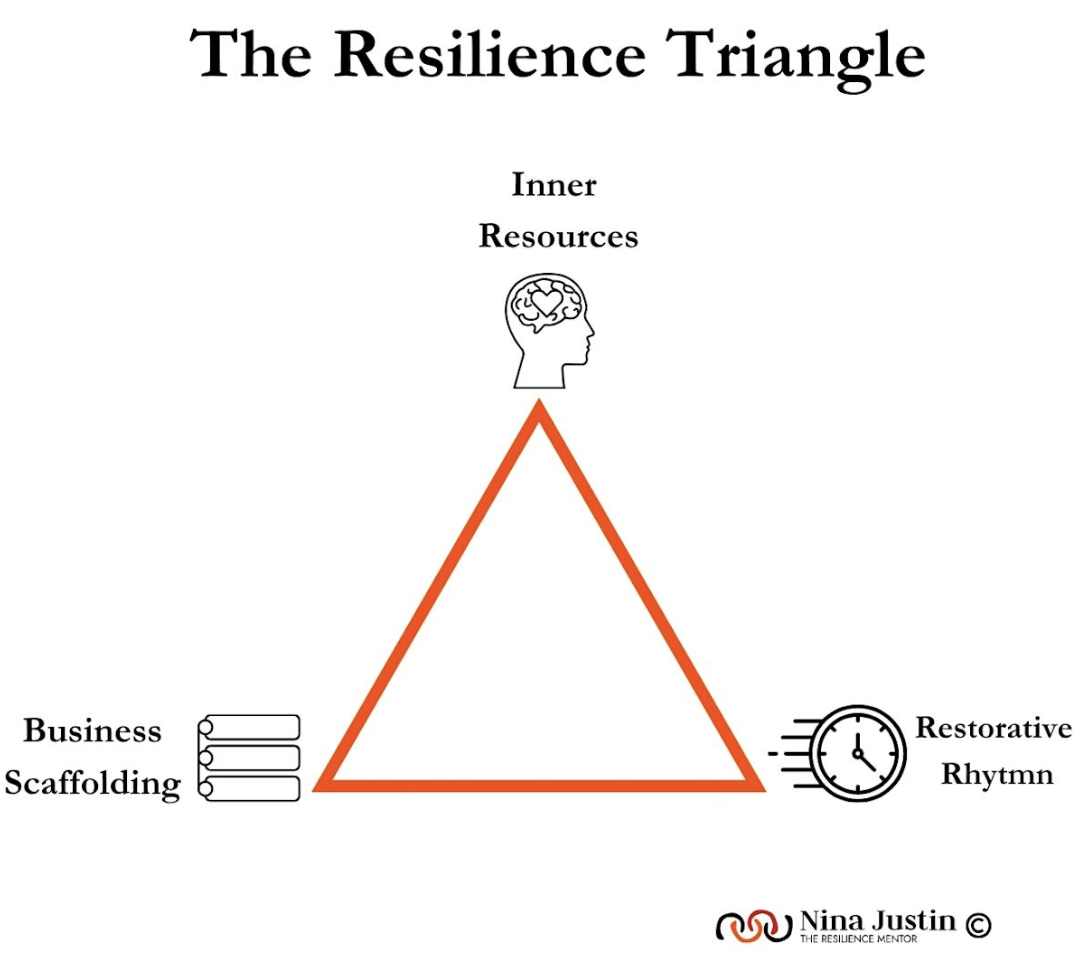Startup Wisdom is a new TNW series that offers practical lessons from experts who have helped building up great companies. This week, global traction strategist Nina Aziz Justin – the founder of resilience – mentor – shares her approach to build resilience.
In the startup world we are taught to be obsessed with metrics. Combustion rate, CACPresent MRR – They dominate the dashboards and make the decisions. And yes, data is important. But there is something that is quieter that rarely gets the same spotlight: Resistance.
This piece offers a balanced perspective – one that offers space for both sides. While execution meters are essential for traction and scaling, resilience is not just a soft ability. It is a central operating system – the invisible force that enables an founder to continue to dive, build carefully and navigate uncertainty with strength and clarity.
The case for metrics: why data is absolutely important
Let us be clear: in today’s fast -moving surroundings with high inserts, the numbers count. Metrics help us validate our ideas, measure the dynamics and make well -founded decisions. They are as investors evaluate the risk and how we understand as a founder whether our vision actually ends up in the real world.
TNW City Coworking Space – where your best work happens
A area of work for growth, cooperation and endless networking opportunities in the heart of technology.
You have to know your CAC. You have to follow the emigration. You need a pulse for storage and cash flow. These are not vanity statistics – they are the elixir of life of the sustainability of their company.
But here is the rub: strong metrics alone do not guarantee endurance.
Again and again I saw startups with impressive early numbers inside – Folded founders, decision -making tiredness, burnout or simply the loss of joy and loss of vision. Therefore, real traction has to contain more than that in the table.
The power of resilience: it is more than just Grit
Resilience is often confused with blind persistence – through, harder, “strong” remains. But in truth, resilience is more elegant and multi -dimensional than that.
In my work I use a proprietary concept that I developed, which I as “” as “” as “as” “”Resilience triangle ” – a way to create resistance from the inside out.
It weaves three important threads together:
- Inner resources – Emotional regulation, clarity of identity and the ability to remain grounded by ups and downs.
- Scale – Systems that support you: smart offers, sustainable pricing, clear time limits and a support group that has your back.
- Restaurant rhythm – Recovery, reflection and new calibration. Because non -stop hustle and bustle leads to erosion without a break, not to excellence.

This is not just philosophical. A 2023 Harvard Business Review The study showed that startups under the direction of founders of resilience survived by 38% more often over five years. A McKinsey Global Survey Connected resilience structure with an increase in innovation results by 21%.
The most convincing of all is that 2024 Research report of the start -up resilience. The report was produced by Foundology in cooperation with the UCL School of Management and supported by Enterprise educators UK and offers a powerful confirmation of what many of us have experienced in this area. The greatest of its kind, in which almost 400 entrepreneurs were involved, that 92% of the founders describe resilience as the most important entrepreneurial characteristic, even before communication and problem solving.
It reminds us that resilience is not just a feel-good factor-it is a proven, practical lever for the start success.
Resilience and execution: not opposites – but intertwined with each other
Here we close the gap.
Resilience is not the opposite of execution – it is what drives an effective execution over time. Founders who cultivate resistance make decisions more clearly, recover faster of setbacks and keep the focus in the middle of the pressure. This 92% number from the Foundology study speaks volumes – resilience is no longer optional, it is fundamental.
The two are not in conflict-sie, co-dependent. Metrics tell the story. With resilience you can continue to write the next chapter.
Let’s talk about the common criticisms
“Resilience without execution = stagnation”
TRUE. But that is not the kind of resistance I talk about. Real resistance moves – it experiments, learns and adapts. Especially in shabby, under -financed startups, it is often the only reason why a founder finds creative problems instead of stopping.
“Not every founder has to be emotionally balanced”
Fair – not everyone leads from a place of calm. But those who lack the resilience feel overwhelmed four times more often and their startup early. Emotional chaos may be able to survive at short notice – but it rarely scales.
“Resilience is a by -product, not a main indicator”
Actually it is both. Yes, resilience is forged in the fire – but it can also be cultivated proactively. Teams that intentionally build resilience, react more reacting, more imaginative and less likely.
“Market conditions, not thinking, determine success”
External factors are absolutely important. But it is the resilient founders who are the fastest to adapt, turn carefully and find paths to survive when others stand. In today’s Polycis world, thinking Is Strategy.
A more balanced lens: metrics + resilience = real traction
We see a shift – a new generation of investors and consultants begins to evaluate both execution metrics and human metrics. Not to be fluffy, but to avoid bet on companies with shiny numbers and crumbling foundations.
Resilience, adaptability and the start-up orientation are now regarded as risk-reducing assets-and rightly so. They do not replace the numbers. But they give the numbers that take.
Would you like to strengthen the resistance in your company?
Here are some simple ones to start with high impact locations:
- Calibrate schedule and new. Consider it as business hygiene.
- Align your offers and prices for your energy, not just on the market.
- Build a trunk. Not only consultants, but people who raise and challenge them.
- Visit your model. Is your company still a game for the life you want to live?
These are not soft things. They are strategic.
You can keep the business you can hold
This is not a call to give up metrics. It is an invitation to expand what we count.
The startups that thrive not only carry out well – they keep under pressure. They develop without breaking. They grow in a way that includes the founder, not just the forecast.
So follow your KPIs. Watch your runway. Perform the numbers.
But also questions: Can I still breathe in this business?
Because if you can, you have endurance, clarity and fire to build on – not just faster, but better.
This is not a fluff. It is fundamental.


Comments are closed.